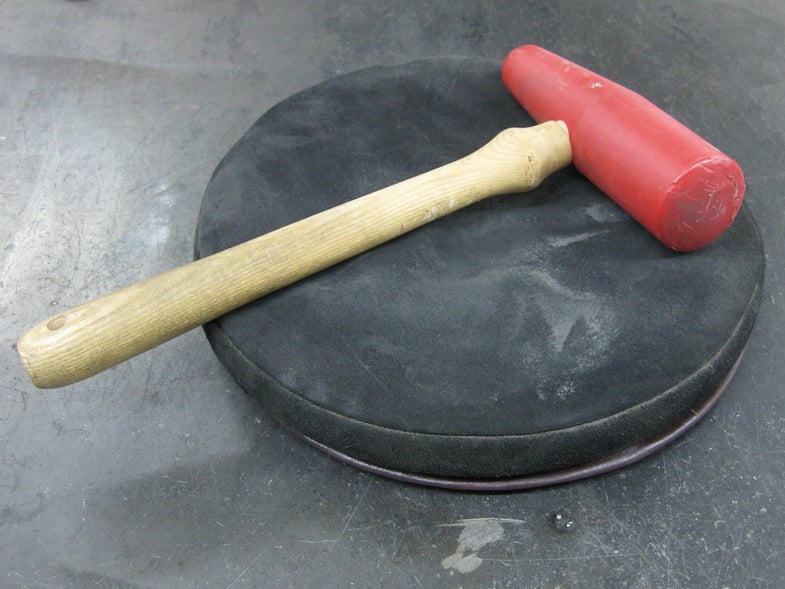Video: Make a Metal Bowl with a Tree Stump and a Mallet
An old-school metal shaper makes it look easy

Take a piece of tissue paper. Support the edges and press down on the center to form a bowl. The ripples that will form are extra material with nowhere to go. Now imagine the tissue was metal and you see one of the essential difficulties of putting compound curves (as opposed to a simple curve, aka a fold) into sheet metal when you need a little impression and don’t have a stamping machine handy. But if you know exactly where and how to hit, you can do it with nothing more than a mallet and a tree stump.
When the metal is flat, all is well. As in the tissue paper example, once a depression that constitutes a compound curve is made, the metal is going to form ripples. That extra metal needs to go somewhere. Through a specific way of supporting the work and hammering, sheet metal shapers drive the extra metal forming those ripples back into the sheet itself, making the surface area slightly smaller and the metal slightly thicker in the area being hammered. If this technique is done incorrectly, you’ll simply chase the ripples all around the work piece, eventually flattening it back out, having wasted a lot of energy hammering. When it’s done correctly, hammering actually makes the metal get thicker in the area being hammered, counter intuitive as that may seem.
Making bowls may not be all that interesting in and of itself, but this technique and the ability to form these compound curves is at the core of all sheet metal hand forming. This fellow makes it look easy: